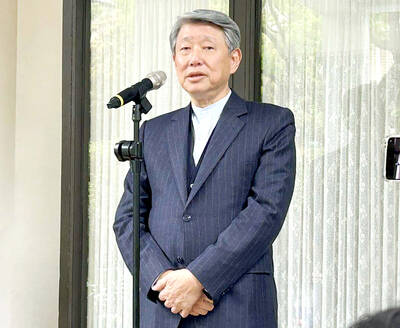Asia’s small, open economies are caught in the crossfire of a tussle between the US and China over whether the yuan should strengthen against the dollar to fix the lopsided global economy.
The greenback’s slide against Asian currencies is dealing a double whammy to the region’s export-dependent economies, hitting their exports and eating away at their massive foreign exchange holdings.
Some see the US dollar’s decline as a necessary adjustment to reduce global trade imbalances, but it has not weakened significantly against the Chinese yuan, whose value is tightly managed by Beijing — to much US criticism.
“The West needs to save more, Asia and the Middle East need to spend more, and currencies need to adjust,” Standard Chartered chief economist Gerard Lyons said.
“The big problem is the continued recent stability of the Chinese yuan against the dollar. Yuan stability is forcing many Asian countries to fight to keep their currencies stable to maintain competitiveness,” he said.
The currency issue risks stoking trade tensions when leaders of the 21-member APEC forum meet in Singapore on Saturday and Sunday to discuss the global economy and free trade.
The US dollar has plunged about 15 percent against a basket of six other major currencies from a peak earlier this year, and recently hit one-year lows against a batch of regional Asian currencies.
US officials ritually express their backing for a “strong dollar,” but have done nothing to arrest its slide, which many see as necessary to reduce the big US trade deficit and support struggling US exporters.
Beijing for its part re-pegged the yuan to the US dollar in July last year as the global financial crisis hit its exports.
Facing a loss of competitiveness against China’s exporters, several central banks in the region — mainly in Southeast Asia — have bought US dollars in recent weeks to curb their currencies’ ascent, traders say.
Experts say China is unlikely to loosen its grip on its currency until it is confident that its economy is past its recent wobble.
“Currency moves would help to reduce global imbalances but policymakers don’t view it as a priority,” said Dariusz Kowalczyk, chief investment strategist at SJS Markets in Hong Kong.
“Every country has its national interests. It’s in the interests of China to promote its exports,” Kowalczyk said.
China is unlikely to adjust its currency policy before the middle of next year and any rise in the value of the yuan against the dollar would be gradual, he said.
Virtually free credit in the US and other major economies has fueled a massive binge by investors on risky assets, such as equities and commodities, while leading to a sell-off of the US dollar.
Nouriel Roubini, the New York University professor who earned the nickname “Dr Doom” for predicting the global financial crisis, warned last week that this “mother of all carry trades faces an inevitable bust.”
“The reckless US policy that is feeding these carry trades [selling low-return currencies to buy other higher yielding assets] is forcing other countries to follow its easy monetary policy,” he wrote in the Financial Times.
“Central banks in Asia and Latin America are worried about dollar weakness and are aggressively intervening to stop excessive currency appreciation,” Roubini wrote.
Some analysts see India’s recent move to buy 200 tonnes of gold from the IMF for US$6.7 billion as a clear sign that countries are losing confidence in the US currency.

MULTIFACETED: A task force has analyzed possible scenarios and created responses to assist domestic industries in dealing with US tariffs, the economics minister said The Executive Yuan is tomorrow to announce countermeasures to US President Donald Trump’s planned reciprocal tariffs, although the details of the plan would not be made public until Monday next week, Minister of Economic Affairs J.W. Kuo (郭智輝) said yesterday. The Cabinet established an economic and trade task force in November last year to deal with US trade and tariff related issues, Kuo told reporters outside the legislature in Taipei. The task force has been analyzing and evaluating all kinds of scenarios to identify suitable responses and determine how best to assist domestic industries in managing the effects of Trump’s tariffs, he

TIGHT-LIPPED: UMC said it had no merger plans at the moment, after Nikkei Asia reported that the firm and GlobalFoundries were considering restarting merger talks United Microelectronics Corp (UMC, 聯電), the world’s No. 4 contract chipmaker, yesterday launched a new US$5 billion 12-inch chip factory in Singapore as part of its latest effort to diversify its manufacturing footprint amid growing geopolitical risks. The new factory, adjacent to UMC’s existing Singapore fab in the Pasir Res Wafer Fab Park, is scheduled to enter volume production next year, utilizing mature 22-nanometer and 28-nanometer process technologies, UMC said in a statement. The company plans to invest US$5 billion during the first phase of the new fab, which would have an installed capacity of 30,000 12-inch wafers per month, it said. The

Taiwan’s official purchasing managers’ index (PMI) last month rose 0.2 percentage points to 54.2, in a second consecutive month of expansion, thanks to front-loading demand intended to avoid potential US tariff hikes, the Chung-Hua Institution for Economic Research (CIER, 中華經濟研究院) said yesterday. While short-term demand appeared robust, uncertainties rose due to US President Donald Trump’s unpredictable trade policy, CIER president Lien Hsien-ming (連賢明) told a news conference in Taipei. Taiwan’s economy this year would be characterized by high-level fluctuations and the volatility would be wilder than most expect, Lien said Demand for electronics, particularly semiconductors, continues to benefit from US technology giants’ effort

‘SWASTICAR’: Tesla CEO Elon Musk’s close association with Donald Trump has prompted opponents to brand him a ‘Nazi’ and resulted in a dramatic drop in sales Demonstrators descended on Tesla Inc dealerships across the US, and in Europe and Canada on Saturday to protest company chief Elon Musk, who has amassed extraordinary power as a top adviser to US President Donald Trump. Waving signs with messages such as “Musk is stealing our money” and “Reclaim our country,” the protests largely took place peacefully following fiery episodes of vandalism on Tesla vehicles, dealerships and other facilities in recent weeks that US officials have denounced as terrorism. Hundreds rallied on Saturday outside the Tesla dealership in Manhattan. Some blasted Musk, the world’s richest man, while others demanded the shuttering of his